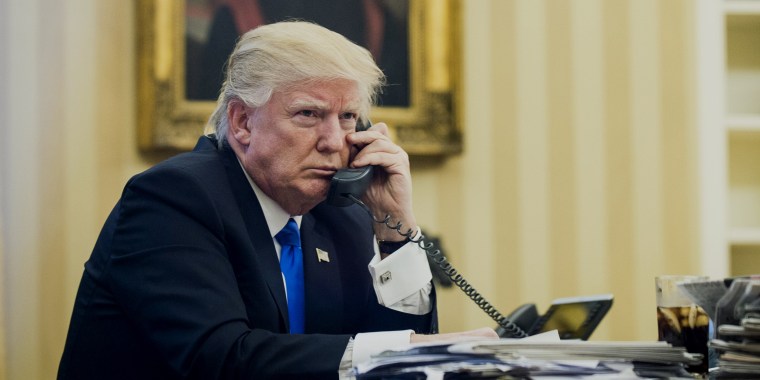Spend enough time online, and it quickly becomes obvious that there are plenty of folks pitching all kinds of provocative ideas. The vast majority of them will not have access to the president of the United States.
A couple of years ago, however, conditions in the White House were quite different. The New York Times reported over the weekend:
Around 5 in the afternoon on Christmas Day in 2020, as many Americans were celebrating with family, President Donald J. Trump was at his Mar-a-Lago home in Palm Beach, Fla., on the phone with a little-known conservative lawyer who was encouraging his attempts to overturn the election, according to a memo the lawyer later wrote documenting the call. The lawyer, William J. Olson, was promoting several extreme ideas to the president.
How extreme? Olson wrote in his memo to the Republican, “Our little band of lawyers is working on a memorandum that explains exactly what you can do.” The lawyer conceded that part of his plan could be regarded as tantamount to declaring “martial law,” though he said such criticisms should be dismissed as “fake news.”
The five-page document, which the Times published in its entirety, was titled “Preserving Constitutional Order.”
Olson’s memo went on to say, “It is no understatement to say that the very existence of our Constitutional Republic is slipping away — that which was entrusted to our generation by the Founders and each succeeding generation — unless you act, and act promptly.”
To be sure, Americans are free to make radical recommendations. What makes these circumstances so provocative, however, is the fact that the lawyer making radical recommendations was given an audience with the sitting president, who was apparently listening.
In fact, according to Olson’s document, he was also in touch with then-acting Attorney General Jeff Rosen, at Trump’s suggestion.
Stepping back, a story like this underscores questions about who had Trump’s ear as he took steps to claim illegitimate power. As the Times’ report summarized, “The involvement of a person like Mr. Olson, who now represents the conspiracy theorist and MyPillow chief executive Mike Lindell, underscores how the system that would normally insulate a president from rogue actors operating outside of official channels had broken down within weeks after the 2020 election.”
But I’m also struck by the extraordinary number of anti-election memos circulating among members of Team Trump in the post-election period.
Circling back to our earlier coverage, there was, of course, John Eastman, who wrote an outrageous memo, which was effectively a blueprint Republican officials could follow to reject the results of the election and keep the losing candidate in power. Jeffrey Clark, a former Justice Department official, also used his office to sketch out a map for Republican legislators to follow in which they could try to overturn the will of voters.
But there’s no reason to stop there. Less than a week before the Jan. 6 attack, John McEntee, a White House aide, prepared his own anti-election memo, complete with unfortunate historical inaccuracies. Jenna Ellis, one of Trump’s campaign lawyers, ended up drafting two memos on overturning the election.
Evidently, there’s yet another document to add to the list.

